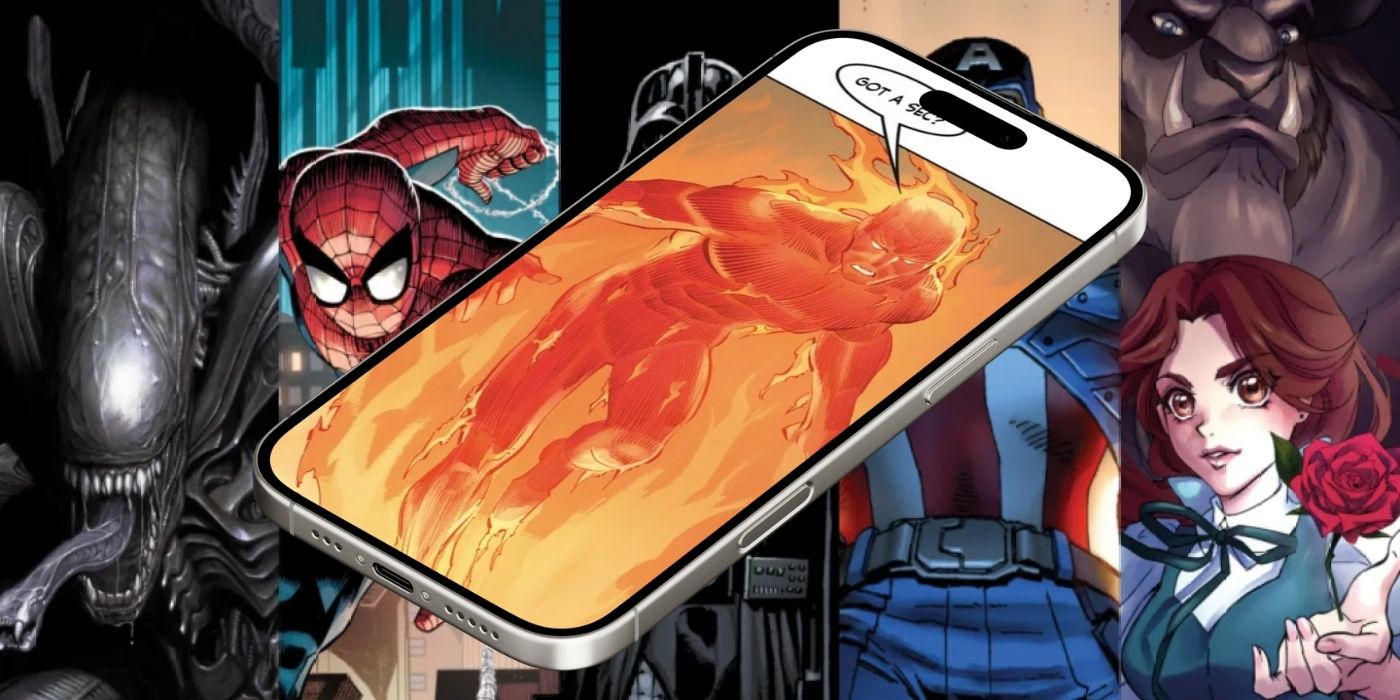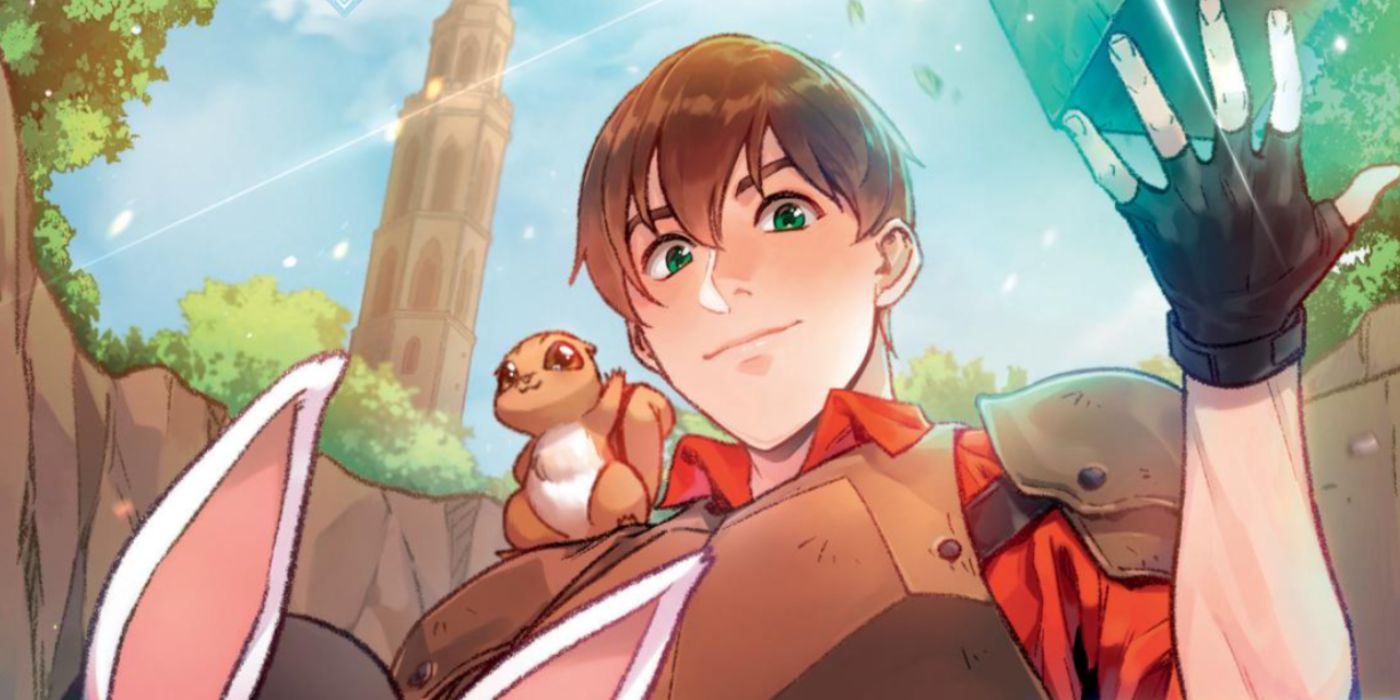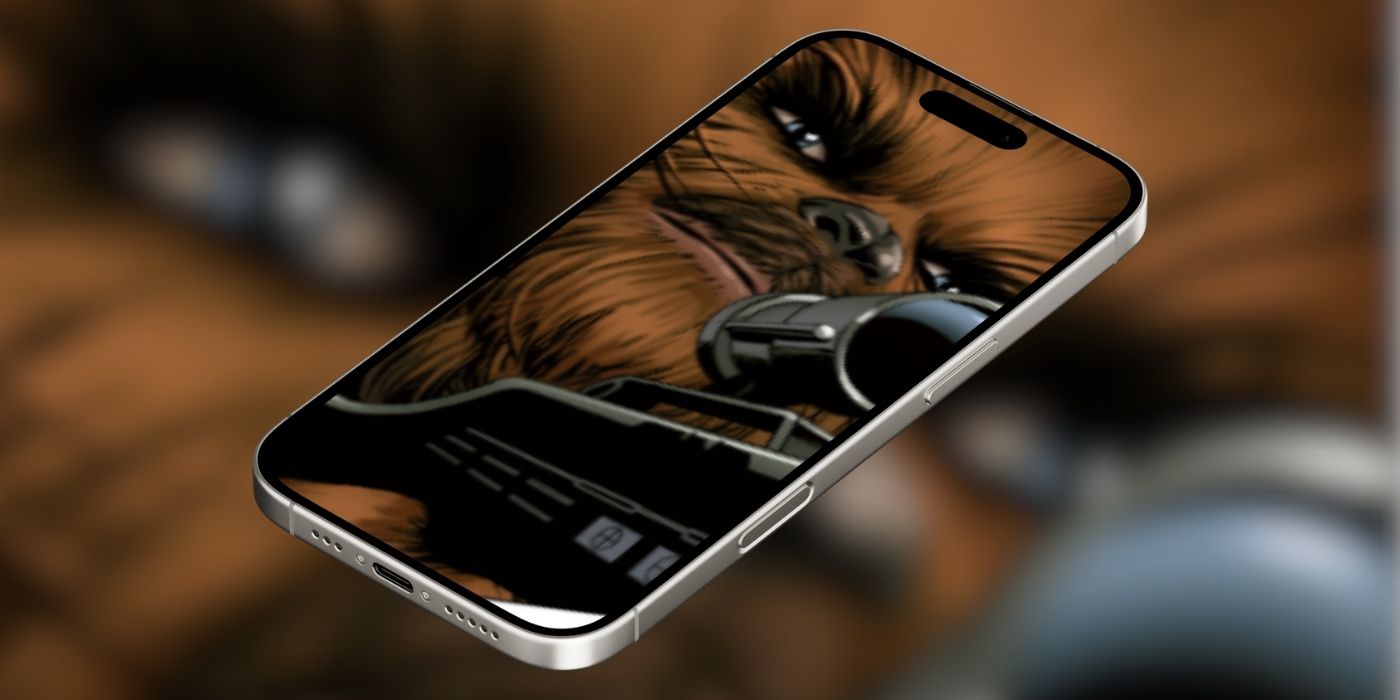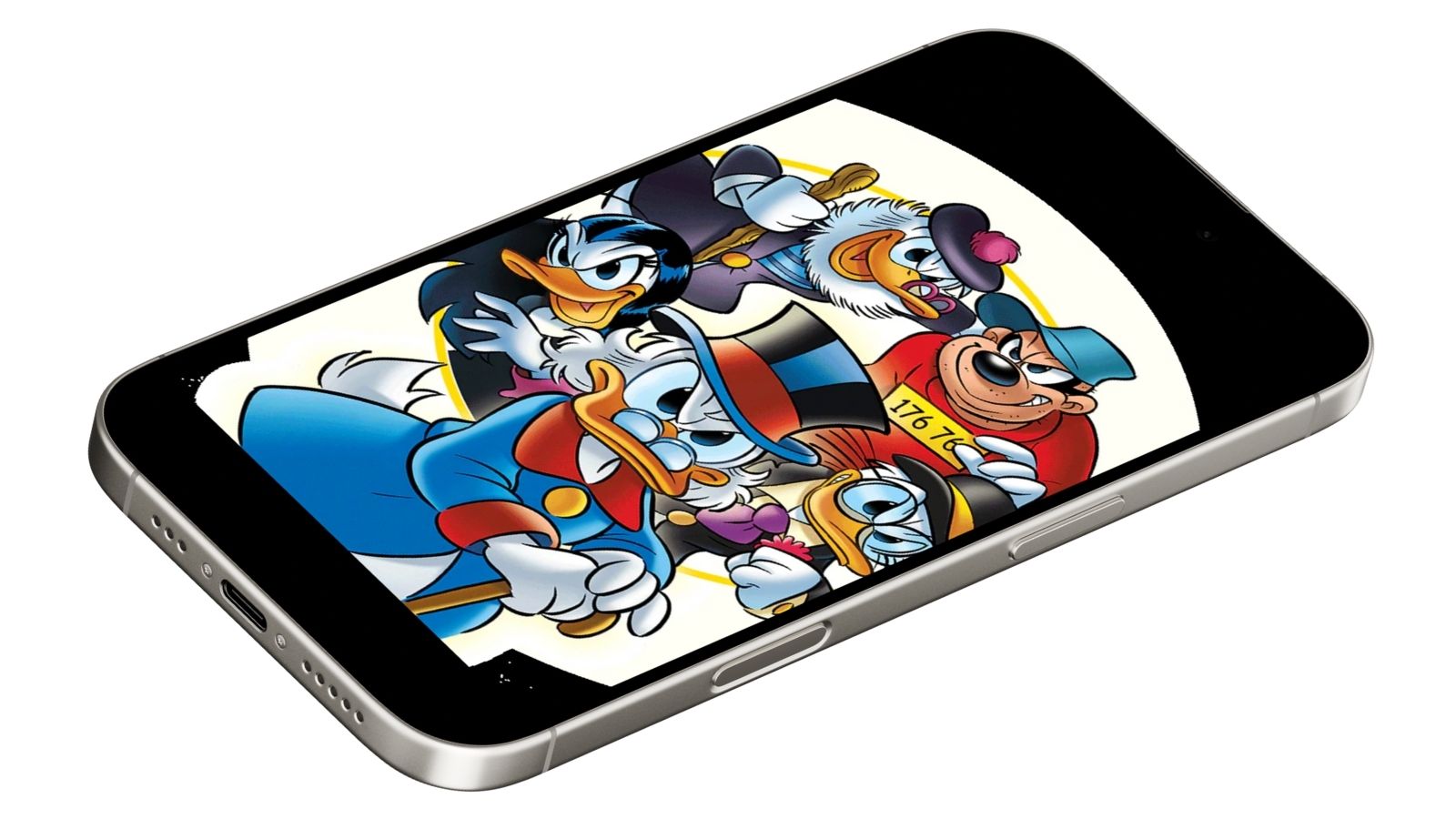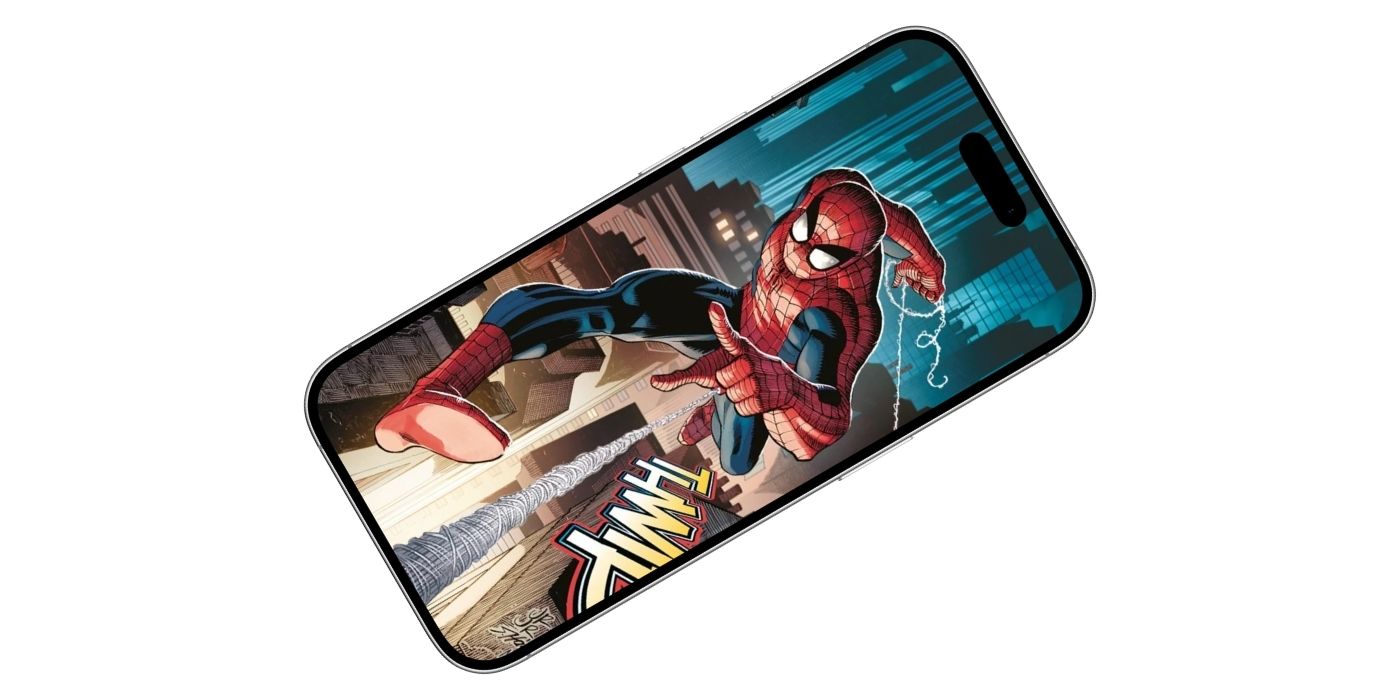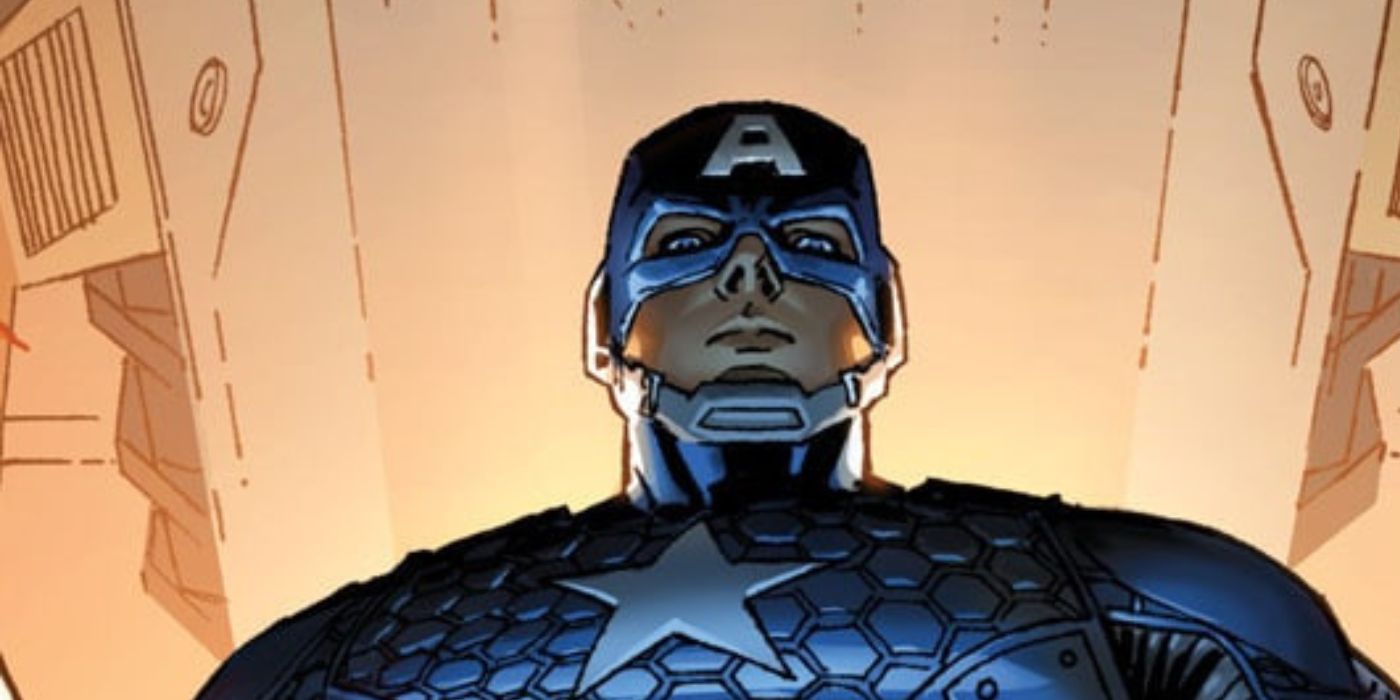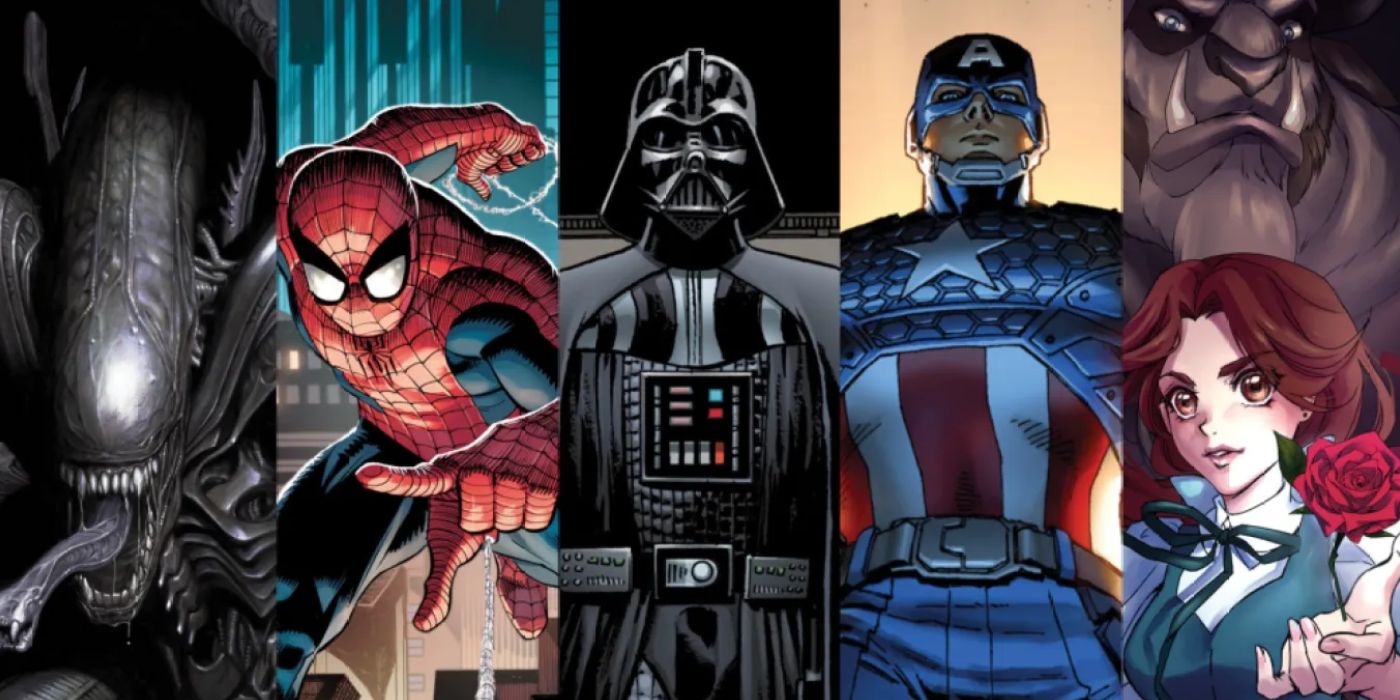The stock of Webtoon Entertainment (WBTN) recently skyrocketed, boosted by the announcement of a strategic partnership with Disney to create a new digital platform hosting more than 35,000 comics from the worlds of Marvel, Star Wars, Pixar, and 20th Century Studios. The difficult art of webtoonization But behind this financial fireworks display lies another crucial factor: the painstaking work of webtoonization. At Printoonize, we are proud to stand at the very heart of this transformation. Since the beginning of 2025, our dedicated teams have been adapting some of the most iconic Marvel and Star Wars titles into the vertical scroll format. This isn’t just resizing panels: it’s a true visual and narrative reinvention designed for mobile-first audiences and the global Webtoon generation. Turning a breathtaking two-page comic spread into a seamless vertical reading experience requires craft and precision. It means rethinking pacing, reframing artwork, repositioning speech bubbles, and ensuring that the original impact of the scene not only survives but often feels even stronger in its new digital life. The recent success of Webtoon on the stock market is therefore not only the result of a major strategic announcement. It’s also powered by the behind-the-scenes work of studios like Printoonize, who breathe new life into beloved stories by bringing them into the scroll format. And this is just the beginning. Our Printoonize service is rapidly scaling up, with a growing team ready to webtoonize more and more high-profile Marvel series in the months ahead. This cultural and technological shift is underway, and we are proud to be among the pioneers shaping the future of comics. Disney’s move into the Webtoon ecosystem isn’t just a new chapter for its franchises: it’s a signal that the vertical scroll format has become a global standard. In this transformation, the studios that know how to translate legacy content into vertical storytelling are already leading the charge. At Printoonize, we’re not watching it happen, we’re building it. Want to bring your stories into the new era of digital comics? Contact us today and discover how Printoonize can transform your content for the Webtoon generation.
How to transform a webtoon into a print manga?
Webtoon into a print manga: it sounds simple, but it’s an art form. In a world where digital stories dominate, bringing them to paper isn’t just about resizing panels. It’s about reimagining storytelling for a new medium. That’s where Printoonize! steps in. Turning a webtoon into a printed manga isn’t just a layout adjustment, it’s a full editorial adaptation process. At Printoonize!, we specialize in helping creators and publishers bring their digital stories to life in print. Whether you’re adapting a successful webtoon into a physical book or turning a classic manga into a vertical scroll experience, our team ensures a seamless transition between formats, without compromising the story’s impact. Editorial adaptation, not automated conversion Unlike automated tools or AI-based solutions, Printoonize relies on human expertise. Every adaptation is handled by experienced editors, designers and letterers who carefully adjust pacing, panel structure, and layout to fit the expectations of print readers. We don’t just “convert” content: we rebuild it for a new medium, while staying true to the creator’s original intent. Dialogue is rebalanced, visual rhythms are redesigned, and the entire reading experience is rebuilt to feel natural in book format. What is “printoonization”? Printoonization is the process of transforming a vertical webtoon into a horizontal, page-based print edition. This includes: full page layout design and reformatting, manual reworking of transitions and rhythm, typography and lettering adapted for print, a final product that reads like a manga and feels like the original story. Conversely, we also provide webtoonization: adapting manga or traditional comics into vertical-scrolling content optimized for mobile reading, perfect for platforms like Webtoon, Lezhin or Ono. A proven track record across formats Printoonize! is the graphic adaptation studio of MAKMA, the leading European agency for comics, manga, and webtoon production. Based in France, MAKMA has worked on hundreds of international projects for publishers in the US, Europe, and Asia. Our clients include Wattpad Webtoon, Papertoon, Ablaze, Kamondo, Kbooks, Kotoon and more. We’ve helped adapt top-performing webtoons into high-quality print editions, like Dungeon Reset, and supported print-first authors looking to reach a digital audience. Ready to adapt your webtoon into a print manga? If you’re a publisher, editor, or storyteller with a title that deserves a wider audience, Printoonize! is your cross-format solution. Contact us for a quote, and let’s talk about how we can transform your project, from screen to shelf, or vice versa. Don’t let your story stay stuck in one format. Reach new readers, new markets, and new possibilities. Let Printoonize! turn your vision into a published reality.
Webtoonization: How We Reimagined Star Wars for Mobile Reading
When we were entrusted with adapting Star Wars into a webtoon, we knew it was more than just a technical challenge: it was a matter of storytelling integrity. Webtoonization is the subtle craft of adapting comics originally designed for print into a seamless, immersive format made for smartphones. At Printoonize!, this process is part of our core expertise. As comic book professionals, we take pride in reshaping both original creations and world-famous licenses for the webtoon format. Among the projects we’ve worked on, Star Wars stands out as a true milestone. Turning such an iconic universe into a scrollable, smartphone-native experience requires both precision and deep respect for the source material. Two of our layout artists, Lorelei Bott and Clémentine Guyot, were given the mission of webtoonizing Star Wars. Their skills, patience, and sense of storytelling were key to transforming static pages into a fluid digital experience. Lorelei Bott, who works with MAKMA as a letterer and layout artist, often says: “Love is to art what talent is to painting”. This personal motto reflects the way she approaches each project: with passion and care, even more so when dealing with a saga as legendary as Star Wars. Clémentine Guyot, who joined MAKMA in 2020, brings a unique blend of experience from comic book publishing and bookselling. She’s also a letterer and layout artist, and her energy is contagious. She shares her love for the medium with a quote from Wolinski: “comics will never be as crazy as the people who love them”. We believe webtoonization isn’t just about slicing panels and stacking them vertically. It’s about rethinking the rhythm, flow, and emotion of a story. It’s about understanding how readers interact with content on mobile devices and adapting our storytelling accordingly, without ever betraying the spirit of the original work. The adaptation of Star Wars into a webtoon fits into a broader reflection on why vertical scrolling isn’t just a format shift: it’s a narrative evolution. At MAKMA, and through Printoonize!, we’ve built a method that respects both the artistic intention and the reader’s experience. Our work on Star Wars is just one example of how we bring our know-how to the service of beloved stories, giving them new life in a format made for today’s audiences. Are you a publisher or a digital platform looking to adapt some print comics into mobile-first webtoons? Let’s bring your stories to the scroll generation. Contact us!
Webtoonization with MAKMA: From Duckburg to the Marvel Universe
In an era dominated by mobile-first experiences, rethinking how stories are told has become essential for rights holders and publishers. At the crossroads of technology and editorial craftsmanship, adapting traditional comics into immersive scroll-based narratives is no longer optional: it’s strategic. Our webtoon adaptation service is designed for content owners seeking to elevate their IPs into vertical formats, bridging cultural trends with user behavior on global webtoon platforms. At MAKMA, webtoonization is more than a service, it’s a creative transformation. Through our dedicated Printoonize team, we reimagine iconic stories for the vertical reading experience, built for today’s mobile-native audiences. After nearly two years of trusted collaboration with Ducktoon (Unique Heritage Media’s Disney-branded webtoon platform), we’ve now extended our expertise to new, high-impact projects. The latest? The webtoonization of Marvel titles, including The Amazing Spider-Man, Star Wars, and Alien. These are not just conversions: they are editorial reconstructions, adapted for scroll-based storytelling while respecting the essence of the original works. We don’t just adapt comics. We adapt expectations. Turning horizontal storytelling into vertical narratives requires more than technical finesse. It takes an editorial mindset, a strong grasp of narrative rhythm, and a deep respect for the characters and their universes. This is where MAKMA excels. With 20+ years of experience in the comics industry, our team brings unique value to each project, rebuilding stories panel by panel, ensuring emotional impact, suspense, and clarity flow naturally through the scroll. We deliver first-rate content, consistently validated on the first review, even by the most demanding licensors. A passionate team, a growing mission Our success is built on the talent and dedication of a diverse team of scriptwriters, layout artists, and editors: Lorelei Bott, Julia Bauer, Tess Brunet, Clémentine Guyot, Nathalie Spampinato, Florence Da Silva, Sarah Kourouma, Sara Bismuth, Teresa Caroff, Julie Abadie, Roxane Gardeil, Pierre Le Boulanger, Jérémy Vaslin, Gaël Legeard, Mathieu Auverdin, and Emmanuel Touset. Together, we are shaping a new grammar for storytelling, bridging Korean innovation, American pop culture, and European know-how. We are proud to be at the crossroads of generations, genres, and geographies. From page to scroll: a tailored webtoon adaptation service for comics and IP owners More than a conversion, our process involves a narrative overhaul, from layout reconstruction to pacing refinement, making each episode fully optimized for vertical reading. Whether you’re looking to convert comics to webtoon, launch a scroll-native storytelling experience, or collaborate with a specialized webtoon production company, we bring editorial precision and technological fluency to every project. Whether you’re a publisher exploring new revenue streams or a media brand looking to expand into the vertical storytelling space, partnering with a specialized webtoon adaptation service ensures your stories resonate with a new generation of mobile-native readers. Let us help you reimagine your content, panel by panel, scroll by scroll. Just like we’ve done with Ducktoon, Disney’s official webtoon platform, your stories can seamlessly evolve into dynamic vertical formats that engage modern audiences. We convert comics to vertical format with narrative precision and visual flow, in a process built for mobile-native engagement. Ready to bring your stories into the scroll era thanks to our webtoon adaptation service? Contact us today to discuss your project and explore how we can help you adapt your content for the next generation of readers.
Why Your Comic Needs to Become a Webtoon
Webtoons are not just digital comics: vertical scrolling changes everything. While webtoons are a form of digital comic, they are fundamentally different from traditional digital comics. And the key difference, the vertical scroll, isn’t just a gimmick. It’s the core of a narrative revolution. Digital comics have been around for a while. Most of them simply replicate the paper format: pages, spreads, and horizontal panel layouts. The reading experience mimics that of a printed album, with readers swiping left or flipping pages. Webtoons, on the other hand, were born in South Korea as a mobile-first format. They were designed for digital consumption, especially on smartphones. The vertical scroll is not a cosmetic adjustment. It’s a narrative redesign. Instead of moving from page to page, the reader scrolls continuously from top to bottom. This layout allows for a seamless flow and a unique pacing. Creators can use blank spaces to build suspense, control timing, and even insert pauses that resemble cinematic silence. Panels are optimized for narrow screens, so there’s no need to zoom or pan around. The reading experience is clean, fluid, and perfectly suited to mobile devices. Vertical storytelling has been the key to the webtoon’s massive success with the mobile-first generation. It removes friction from the reading experience and appeals to a broader, often younger, audience. Industry players have taken notice. French studio MAKMA, for example, offers webtoonization services, adapting traditional comics into vertical scroll narratives. Their expertise with Printoonize bridges the gap between classic bande dessinée and the booming webtoon format, proving that the two are not interchangeable. Since their debut in the early 2000s on Naver Webtoon, webtoons have exploded in popularity. The webtoon industry is a multi-billion dollar market. Platforms like Webtoon, Tapas, Tappytoon, and Piccoma attract millions of daily readers. The demographic is predominantly young and female, under 30, which heavily influences the dominant genres: romance, fantasy, drama, action, and thriller. France is catching up fast. New players like ONO, Allskreen, and Wtoon are developing original vertical content with local creators, adapting storytelling techniques to compete with the Korean giants while maintaining their cultural identity. In short, while webtoons and digital comics may seem similar, the storytelling logic is entirely different. The vertical scroll isn’t a trend: it’s a structural innovation that redefines how comics are read and created. For publishers and creators looking to expand their reach in the mobile space, converting existing IP into webtoons isn’t optional anymore. It’s the future. And studios like MAKMA, with their Printoonize solution, are leading the charge.
Captain America Goes Scroll: How US Legends are Retold in a Korean Format, Made in France
An icon of American patriotism, now scrolling on your smartphone. Captain America, the torchbearer of US storytelling, has been reinvented for the webtoon format. Alongside him is Darth Maul, a dark and ultra-modern figure from the Star Wars galaxy. The entire operation is happening on a cutting-edge South Korean platform, orchestrated by a French studio with over twenty years of experience: MAKMA. This isn’t just a fusion of formats; it’s a three-way cultural conquest. It’s an unprecedented alliance between powerful American IPs, Korean distribution technology, and European expertise in narrative adaptation. When Captain America Changes His Battlefield Symbolically, seeing Captain America move from traditional comic book panels to the webtoon universe is like watching a general abandon a rigid battlefield map for vertical guerrilla warfare. The rigid pages, the turning, the word balloons frozen in a classic comic structure are gone. In their place is the scroll, a fluid narrative, and a mobile-first rhythm. America is no longer speaking through physical fascicules sold in comic shops. Its myths are now deployed in the palm of your hand, on a screen, in a format designed for a connected global generation. The Power of Comic to Webtoon Conversion The US storytelling migration is taking place on Webtoon, the explosively growing South Korean platform. Webtoon is a massive export of the Korean narrative format, and in just a few years, it has become the gold standard for Gen Z readers. Vertical reading, natural scrolling, and mobile-optimized design: this formula works, and now attracts the biggest Western franchises. With over 100 Marvel, Star Wars, Disney, and 20th Century titles in the process of conversion, the star-spangled banner now flies in scroll format. The first to lead the way is none other than Captain America, an emblem of the US, who is now reaching young readers worldwide, directly on their phones thanks to the Avengers webtoon series. MAKMA, the European Asset in New Global Storytelling In this three-continent operation, the cultural bridge is French, more specifically, from Bordeaux. The MAKMA studio, already a key player behind the scenes of American comics, is at the center of the game. Its role is to handle the technical and narrative metamorphosis of print works into the webtoon format. This isn’t a crude job of cutting up pages. The process is a work of artistry. It involves deconstructing the original narrative, understanding it in depth, and then reconfiguring it for the scroll. This expertise was developed by MAKMA’s Printoonize! division, which is exclusively dedicated to this type of comic to webtoon conversion. Bryan Wetstein, who heads the division, sums it up: “Captain America was designed to embody a certain American reading experience. Our job is to ensure he speaks with the same power in a Korean format. It’s a balancing act between respecting the original material and adapting it for a new ecosystem.” Darth Maul, Modernity in Scroll Mode To embody this generational shift, Disney isn’t relying on overused figures. Darth Maul, a cult but and contemporary antagonist, is a visual, sharp, and mysterious character, perfect for a pixel-by-pixel narrative. On a smartphone, Maul takes on a new dimension. His silhouette, style, and almost religious silence, everything lends itself to a vertical build-up of tension. He becomes the symbol of this move toward a more direct, fast-paced narrative that’s compatible with the fleeting attention span of the digital age. Europe as a Cultural Strategist What’s striking is that the point of contact between two giants (the US and Korea) is in Europe. MAKMA doesn’t just translate; the studio acts as a full-fledged cultural operator. It’s a player capable of understanding American narrative imperatives and Korean aesthetic expectations, and making them all work together in a new language. This strategic role is built on over two decades of experience in translation, lettering, writing, and publishing, collaborating with the biggest names in the industry. This versatility gives MAKMA a major advantage. At a time when storytelling has become a global commodity, knowing how to precisely adapt it is a powerful tool. The US Market in the Midst of Redefinition Captain America is more than a hero; he’s a narrative territory, a way of telling the world from an American perspective. Seeing him migrate to a mobile format is witnessing a re-carving of the market. US storytelling, once centered on print and TV series, is now digitizing, globalizing, and adopting codes from Asia to continue existing in the minds of young readers. In this context, MAKMA acts as a creative customs agent, a mandatory checkpoint for transforming a work designed for Midtown Manhattan into content ready to scroll in Seoul, Jakarta, or São Paulo. The Scroll, a Global Playing Field The vertical format is no longer a gimmick; it’s the new standard. It’s replacing pages, absorbing panels, and transforming dialogue. It’s breaking down boundaries between styles. And in this new grammar, MAKMA’s role is to translate the DNA of the biggest franchises while preserving what makes them unique. The challenge is technical, narrative, and aesthetic, but it’s also symbolic. It’s about bringing the myths of the 20th century into the interface of the 21st. A French Studio at the Heart of the Shift Perhaps the most surprising part is this: the operational heart of this revolution is in France. An independent studio, skilled in both Marvel standards and webtoon demands, has become an essential link in the new global chain of graphic entertainment. This isn’t a coincidence. It’s the result of smart positioning, strategic choices, and the ability to read the evolution of formats before others do. The World Scrolls, and MAKMA Keeps Pace With the Avengers, Captain America is moving from the battlefield to screens. Darth Maul is reinventing himself for readers’ thumbs. Disney is relying on Webtoon to speak to a generation that no longer reads comics but scrolls for hours. And on this new world map, MAKMA draws the invisible lines, the ones that allow an American narrative to land in a Korean format, thanks to European expertise.
When Spider-Man Goes Vertical, the Industry Turns Upside Down
Disney is going all-in on the webtoon format. And that’s no coincidence. With 100 titles in development, the global entertainment giant aims to bring its iconic characters to a format designed for mobile, fast reading, and a younger audience. Spider-Man, Darth Vader, Belle… all will soon be scrolling vertically on your screen. Why this strategic move? Because in just a few years, webtoons have become the preferred narrative channel for a generation that no longer reads comics the traditional way. And behind this quiet revolution, a French team is playing a key role: the MAKMA studio, through its Printoonize! service. For over 20 years, MAKMA has refined a unique expertise in adapting comics, graphic novels, and manga. Today, that same expertise fuels a new momentum: webtoonization. Transforming traditional works into fluid, immersive digital stories takes far more than resizing panels. It requires a complete rewrite of rhythm, dialogue, and layout. An alchemy that MAKMA has mastered like few others. “Seeing icons like Spider-Man or Darth Vader move into the webtoon format confirms what we’ve been witnessing for years: this format has become a universal language to reach a new generation. For MAKMA, it’s a unique opportunity to bring our expertise to stories that travel from one continent to another, while proving that Europe can play a key role in this new era of visual storytelling.” — Damien Gay, Chief Operating Officer at MAKMA That adaptation work is being led by MAKMA’s Printoonize! division, a team specialized in transforming traditional print comics into vertical webtoon formats, and vice versa. “Adapting Disney comics into the webtoon format is more than a job, it’s a true challenge! What matters most in this process is fully understanding the page composition and knowing how to translate it into a vertical reading model. That’s where our team truly shines. It’s a colossal task that demands highly trained and ultra-efficient people, but it’s also a real joy to work on licenses that make both kids and grown-ups dream.” — Bryan Wetstein, Head of the Printoonize! division at MAKMA The Disney–Webtoon partnership is the ultimate recognition of a format long seen as niche. And it’s a historic opportunity for European creators. Because when global pop culture icons shift to this new medium, it’s clear that the future of visual storytelling lies here. France has a card to play. With its mastery of transcreation and a multiplatform vision, MAKMA proves that it’s possible to elevate graphic culture while speaking the language of today. Those who still see webtoons as a passing trend are going to miss the train. This isn’t evolution. It’s a paradigm shift.
Printoonize: Turn Your Webtoon into a Printed Manga Book
You tell the story. We reshape it for print. Your readers get a book they can hold. You’ve published your webtoon online. Maybe it’s on Webtoon Canvas, Tapas, or another platform. You’ve built a loyal audience. But now you’re dreaming bigger: holding your creation in your hands, printed as a manga-style book, ready to share at conventions, sell in shops, or ship to fans. That’s where Printoonize comes in. 🧠 What is Printoonization? Webtoons are designed for scrolling on smartphones. No fixed pages, no classic comic grid — just one long, flowing strip. To turn that into a book? You don’t just cut and paste. You rethink the story. “Printoonization isn’t just technical work. It’s creative work. It’s about rebuilding the rhythm of the story for a new format.” — Pierre Minne, printoonizer at MAKMA Recutting the scroll into print-friendly panels Redrawing or reformatting when necessary Rebalancing pacing and page-turn effects Adding or adjusting speech balloons for clarity Preparing a HD PDF file ready for any professional printer And yes — we can print and ship the final books directly to you, anywhere in the world. 🔧 What Do You Get with Printoonize? ✅ A fully redesigned, print-ready PDF High-resolution (300 DPI), bleed and margin compliant, and ready for any printer. ✅ Dynamic visual storytelling “We’re not using AI to chop things up. This is real, human storytelling work — done by professionals who live and breathe comics.” — Edmond Tourriol, MAKMA co-founder ✅ Optional: Print and delivery service We can print, package, and ship anywhere — from 10 copies to 1,000+. 📣 Why Print Your Webtoon? 🔁 Give your series a second life Sell at conventions Use as crowdfunding rewards Reach bookstores and libraries Collect and gift offline 💡 Stand out in a competitive market “I didn’t handle the print adaptation myself — Studio MAKMA took care of everything. I got an early look at the pages, and they’re absolutely stunning.” — Kiri, creator of Mon vœu le plus sincère 💼 Who Is Printoonize For? Webtoon creators (Webtoon Canvas, Tapas, Lezhin…) Indie artists wanting to print manga Publishers needing print-ready files Studios seeking layout expertise “The way we arrange the panels guides the reader… that’s our job.” — Pierre Minne, printoonizer 🌍 Trusted by Creators and Publishers Worldwide Clients include Wattpad Webtoon (USA), Papertoon (Germany), and Kamondo, Kotoon, Kbooks, Koyohan (France)… We work globally, speak English, French, Spanish, German, Korean, Japanese, Mandarin, and adapt across time zones. 📦 How It Works — Step by Step Contact us with your project details Send your files (JPEG/PNG + script) We propose a print structure We redesign everything into a print-ready PDF You receive the files + optional print & delivery Simple. Stress-free. Professional. 📬 Start Your Printoonization Today e-mail: contact@printoonize.com Phone: +33 6 89 74 59 69 Location: Studio MAKMA · Bordeaux, France REQUEST A QUOTE 🖋️ From Digital Dream to Printed Reality Printoonize is not a tool. It’s a team. Made of artists, editors, and layout experts who love storytelling. We know what your webtoon means to you — and we’ll give it the printed form it deserves. Let your readers turn the page — for real. Printoonize your story.
From Scroll to Page: Professional Web-to-Print Conversion for Publishers and Webtoon Studios
As webtoons continue to dominate digital platforms, more publishers and content studios are exploring how to bring these stories to print. But the transition from vertical scroll to traditional book format is anything but straightforward. At Printoonize, we specialize in webtoon-to-print layout conversion, providing high-quality, print-ready PDF files tailored for publishers and studios who want to produce printed manhwas or manga volumes from digital-first content. 🧠 Printoonization: What It Means and Why It Matters Webtoons are designed to be scrolled, not flipped. Their structure is fluid, uninterrupted, and optimized for mobile reading. This format, while ideal for apps, presents major challenges when adapted to print: No standard page breaks Irregular panel arrangements Non-linear visual rhythm Printoonization is the craft of converting that scroll into a fully functional print layout. It’s not automation. It’s not about resizing images. It’s a professional editorial process that respects the creator’s vision while delivering a layout that feels natural in book form. “You can’t just cut up a webtoon and expect it to work in print. Each panel has to be rethought in context. That’s our job: to make it read like it was always meant for the page.” — Pierre Minne, printoonizer at MAKMA 🎯 Who Needs Printoonize? For Publishers: Whether you’re a large-scale publishing house or a boutique manga label, Printoonize gives you a reliable way to convert licensed webtoons into printable books — without draining your in-house resources. We help you: Expand your catalogue with digital-first titles Meet growing demand for manhwa and webtoon-based print Ensure layout quality meets reader expectations For Webtoon Studios: If you’re producing webtoon series in-house, we offer a way to take control of the print adaptation process, without relying on third-party improvisation. With our service, you get: A professional layout team at your disposal A file you can send directly to your preferred printer Editorial consistency across volumes and series “We’ve worked with both indie creators and large publishers. In every case, we’re not just formatting — we’re editing. Our layouts carry the rhythm of the original work, adapted for a new medium.” — Edmond Tourriol, co-founder of MAKMA and creator of Z United 🛠️ What We Deliver We provide press-ready, print-optimized PDF files formatted to your specifications. Our deliverables include: High-resolution files (300 DPI) Print dimensions to your request (manga size, US format, custom) Proper bleed, margins, and crop marks Rebuilt panel layouts with careful pacing and page flow Optional title page, credits, backmatter design Compatible with all major printers (offset and digital) We focus on delivering the best possible layout file, so you remain in full control of your production pipeline. 🧩 Our Process Brief & Assessment You send us the source material (JPG, PNG, or PSD files), desired page count, format specs, and any branding or editorial guidelines. Editorial Layout Design Our team analyzes the flow of your series and reconstructs it into a professional print layout — with pacing, readability, and visual impact in mind. Client Review You receive a first version for approval. Revisions and feedback are part of the process. Final Delivery We deliver a fully print-ready PDF, tested for professional printing, ready for your internal production or external printer. 🌍 Trusted by Global Content Creators Printoonize is a service by MAKMA, a French studio with over 20 years of experience in comics and editorial design. We’ve worked with: Wattpad Webtoon (USA) Papertoon (Germany) Kamondo, Kotoon, Kbooks (France), and more We understand the standards of publishers, the urgency of studios, and the need for narrative respect in every adaptation. “Webtoons can absolutely work in print — but only if the adaptation respects the visual tone and pacing of the original. That’s what our layouts are built to do.” — Pierre Minne, print layout specialist 📩 Request a Custom Quote Every project is different. We adapt to your needs, your schedule, and your specifications. Let’s talk about your next title. 📧 contact@printoonize.com 📞 +33 6 89 74 59 69 📍 Based in Bordeaux, France — working worldwide ✅ Printoonize — Bring Your Digital Stories to Print-Ready Life We don’t publish. We make webtoons printable, and we do it with care, storytelling sense, and professional precision. Request your custom quote today.
Mon vœu le plus sincère in Print Manga Format: Author Kiri’s Enthusiasm
Mon vœu le plus sincère makes the leap from web to print thanks to studio MAKMA. The webtoon, written by webcomic author Kiri, has successfully made the leap from digital to print format, thanks to the creative support of MAKMA’s Printoonize service. Kiri speaks with genuine excitement about seeing her series reimagined in physical form and praises the work done by MAKMA’s team. The story follows Api Cramberry, a 20-year-old woman whose quiet life takes a dramatic turn when she meets Praince, a genie. He offers her one wish—but rejects her first request for being too ordinary. With Praince’s help, Api embarks on a journey to discover her “most heartfelt wish,” a quest that could potentially disrupt the natural order of things. Author Kiri Shares Her Experience Asked about the adaptation process, Kiri shares her candid thoughts: “I didn’t handle the print adaptation myself—Studio MAKMA took care of everything. I got an early look at the pages, and they’re absolutely stunning. And no, I’m not just saying that to help promote the book! It felt surreal seeing the panels rearranged, especially since I didn’t do the layout this time, but they’re gorgeous. Honestly, it was hard to believe they managed to do this with my work.” Transitioning from digital to print came with a few adjustments. The first episodes had to be reworked to ensure visual consistency with the rest of the series. For example, Kiri switched from using a textured brush to a smoother one for the inking, creating a more cohesive look. Reflecting on her creative process, Kiri highlights the importance of visual consistency in the webtoon and how much she appreciated MAKMA’s layout work. Seeing her story take physical form is a brand-new and thrilling experience for her. From Web To Print Mon vœu le plus sincère is now available in print manga format, brought to life by Studio MAKMA. The care taken in layout and stylistic coherence played a key role in this successful transition from web to print—and Kiri’s enthusiasm for the printed version of her story is clear in every word she shares.

